Supporting The Troops With Chalk
Words: Jude Nosek
Words and Photos: Jude Nosek, Keson/SOLA
There are 21 public-facing walls at Keson, LLC. By that, I mean walls that are not in conference rooms or personal offices. Nineteen of those walls are painted with a color called Snow White and are adorned with either no artwork or with landscape paintings. The other two walls are painted Pantone Orange 165, Keson’s brandmark color. One orange wall is the first thing visitors see when they walk in the front door, and the other is the boundary between our common office area and our main conference room. Framed and hanging on the latter is an American flag that flew over the Marine base in Helmand province of Afghanistan and a commendation letter from the OC of that base. This is the story of why Keson was recognized and received those gifts.
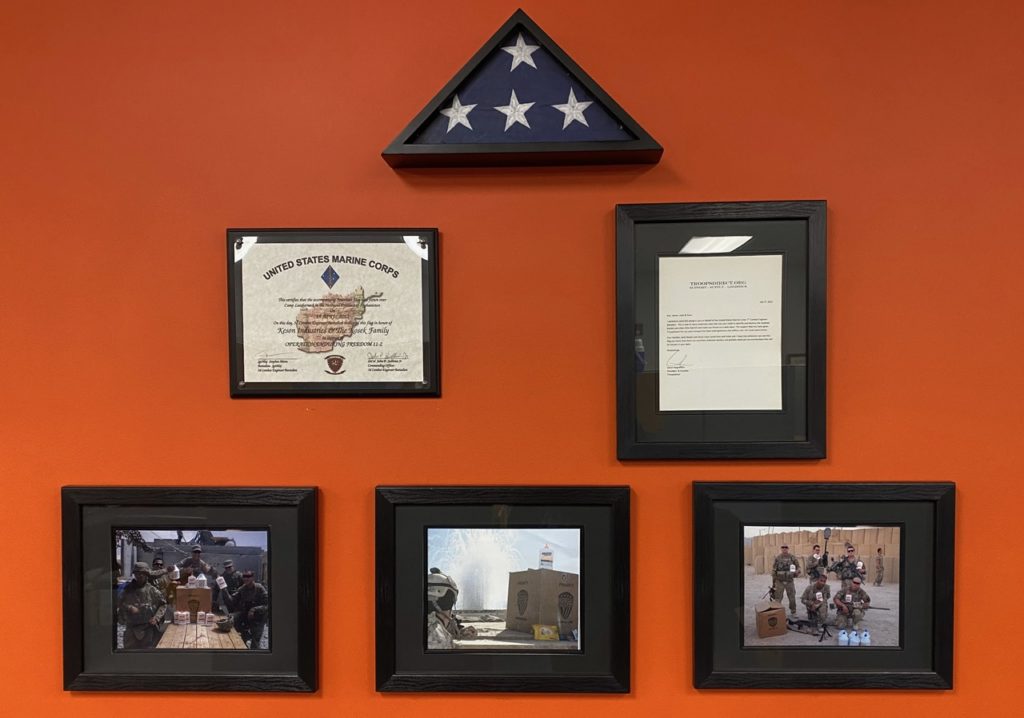
Sometime in the spring of 2011, I received a phone call with a unique request. I had been at Keson for 10+ years, and this was a new one for me. The caller was asking if we sold talcum powder, and he got directed to me because of how he wanted to use the talcum powder. The caller was hoping to find a way to mark the location of improvised explosive devices (aka, IEDs) in the field in the US war in Afghanistan.
I ended up having a conversation with Aaron Negherbon, the Founder and Executive Director of Troops Direct. Aaron had a good friend who was a Marine serving in Afghanistan. This soldier conveyed to Aaron that they were having supply chain issues that occasionally made it difficult for the soldiers to have the items they needed to function safely. Sometimes simple things. One of those simple items that worked in the field was talcum powder. It was out of supply because of how the Marines were using it.
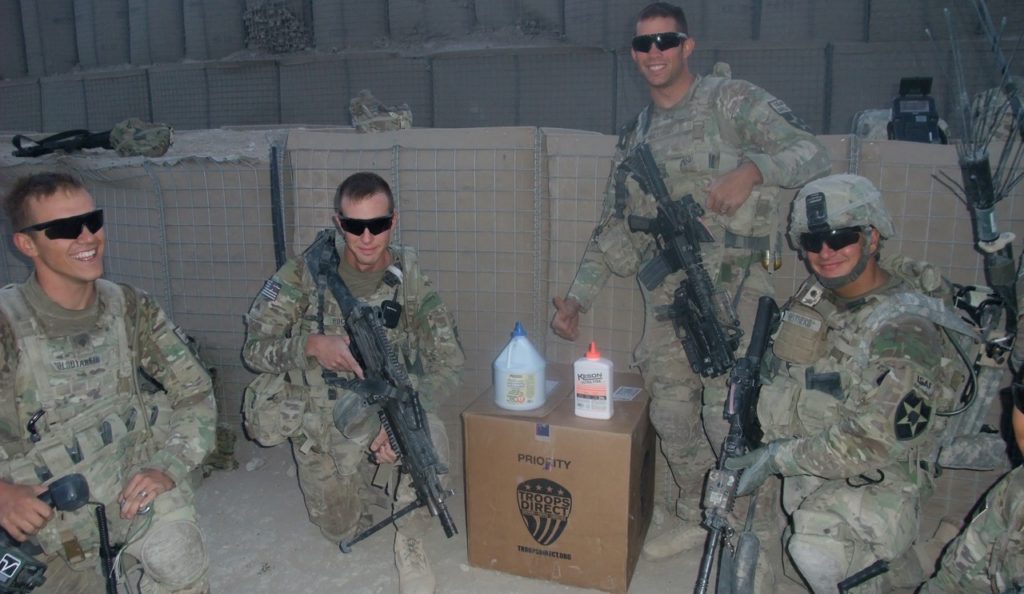
As it was explained to me, enemy combatants/bad actors at times rigged devices to explode if the item were disturbed. Marines would often mark or tag suspicious items on their patrols. Ideally, they would have a support engineer come in right away and determine if these suspicious times were truly a threat, in which case they would be disarmed, intentionally exploded, or examined and dismissed as not a threat to life or limb. However, if no engineer was available, the marine would “mark” that device for later examination. Occasionally a marine would use something to leave an indication of a suspected IED. If they had a flag or survey marker, they would use that. Just as frequently, they would use an item that they had on hand: the cap of a bottle of soda or energy drink or a pile of stones that the marine would assemble. Something that would indicate to the following engineer that “this is the thing or the spot that needs attention,” and the patrol would move on. By the time the engineer came by later to clear the suspicious item, often the bad actors would have already removed the indicator.
This is why the soldiers began using talcum powder. You can’t just come by and “pick up” a sprinkled area of white powder on the dirt like you could a red or orange drink cap. Even if a bad actor wanted to disperse it, they would kick a bunch of dirt over it, but it took time to cover all the white. And even then, the ground would appear disturbed, and the engineers would know where to look. The powder could also be used to mark routes of safe passage. It was cheap, easy to put down, and difficult to pick up, remove or cover-up. The powder provided a super practical solution, but unfortunately, they kept running out of it.
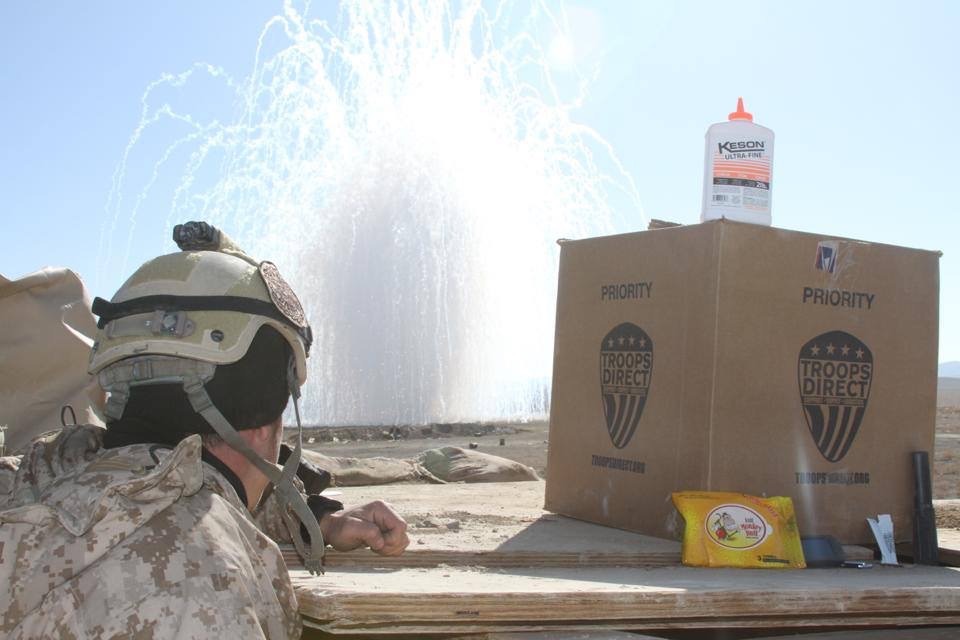
During a conversation between Aaron and his friend in the service, the idea arose to use marking chalk in lieu of talcum powder. However, to get that item into the formally approved military system of supply would take a lot of work, time and “red tape.” Aaron was already directly supplying his friend and his friend’s fellow soldiers with a number of items outside of the normal military logistics channels. Through another friend, Aaron learned about Keson and reached out to see if we could help.
We were in a position to say “yes.” So, we did.
We make marking chalk here in our Aurora, Illinois-based manufacturing facility. At the time, we were (and still might be) the only US manufacturer of this product. We get calcium carbonate (white chalk) from Illinois quarries. We mix it with pigments, bottle it in various sizes and intensities, and supply it to the builders of North America. We make tens of thousands of bottles every year.
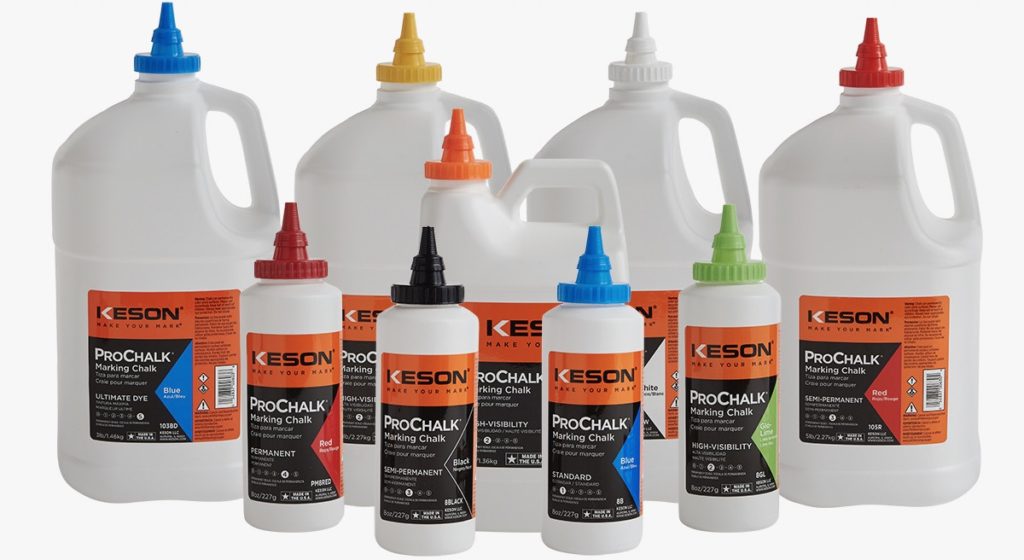
I asked my father if he could work with Keson’s internal operations team, our trucking partners, and Troops Direct to “do something to help Aaron out.”
Within 14 days, we shipped two tons of various colored chalk to Afghanistan via Aaron’s California warehouse. My father convinced the entire supply chain to donate the shipping expense so that it all arrived at Troops Direct for zero out-of-pocket cost to them. Every few months, we would get an additional request, and a few days later, we’d ship out another batch to those serving overseas.
After a year or so, we started to hear from some of the soldiers who had benefited from our very simple “yes.” After another year, we received the items which adorn the wall outside of our main conference room.
Our grandfather, Keson’s founder Roy Nosek, held some values that he tried to live his life by: BE POSITIVE. WORK HARD. RESPECT OTHERS. HAVE FUN. ACT ETHICALLY. DO GOOD.
At Keson, we have adopted these principles and strive to practice them in all we do. Our donations to help keep American soldiers safe is no great act of heroism, but it is an act of good. And I am certain Roy would be proud that we found a way to get it done.
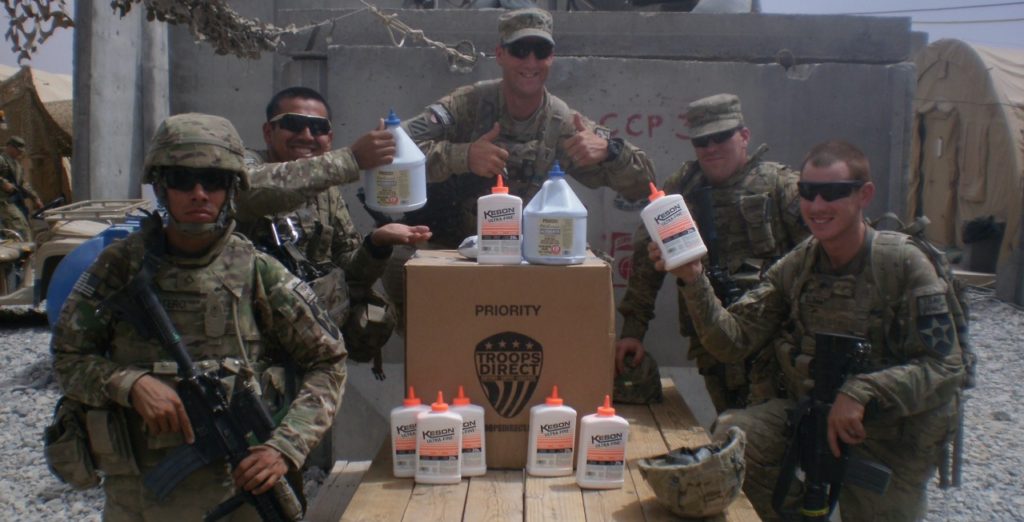
More Information On This Can Be Found Here
About Troops Direct
“Over the last decade, our Troops have not been in the public eye. However, Troops Direct has not forgotten about our service members. Over 2,000,000 Americans continue to serve in over 130 countries. Troops Direct does not send care packages; we provide critically needed supplies to service members. From publicized deployments to the most covert of ‘ops,’ Troops Direct helps our brave Americans accomplish missions and return home safe.”